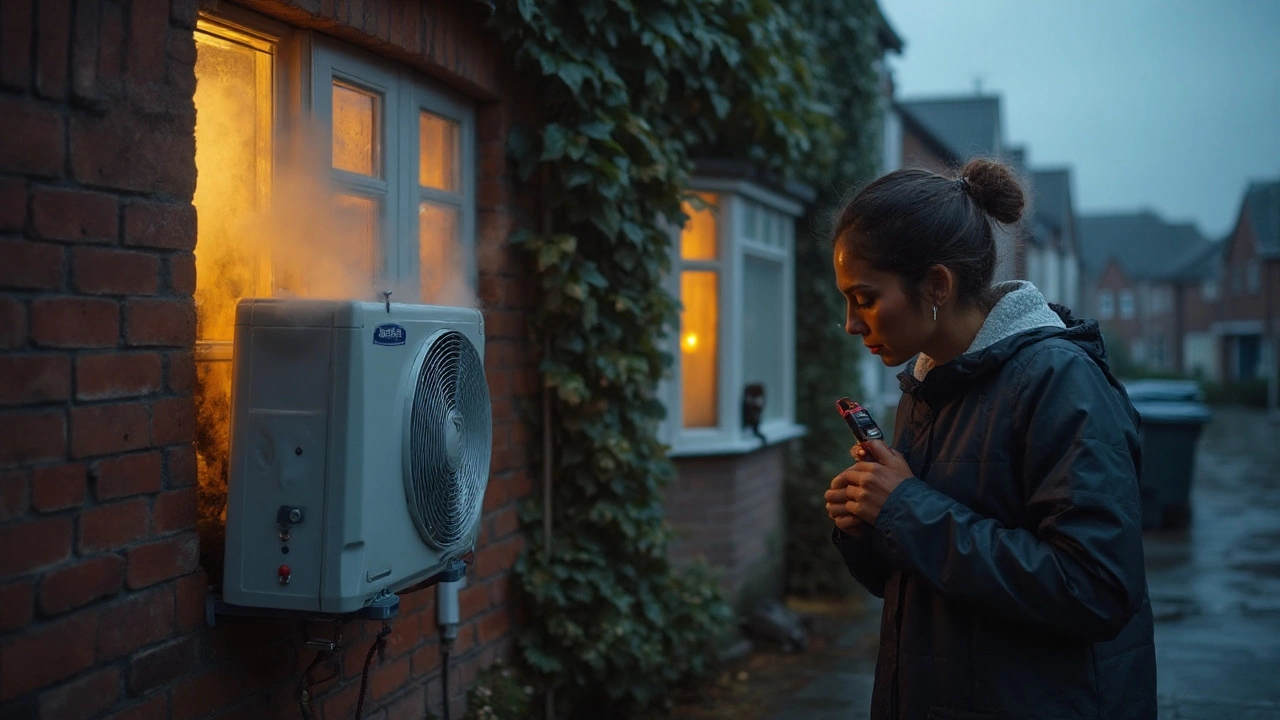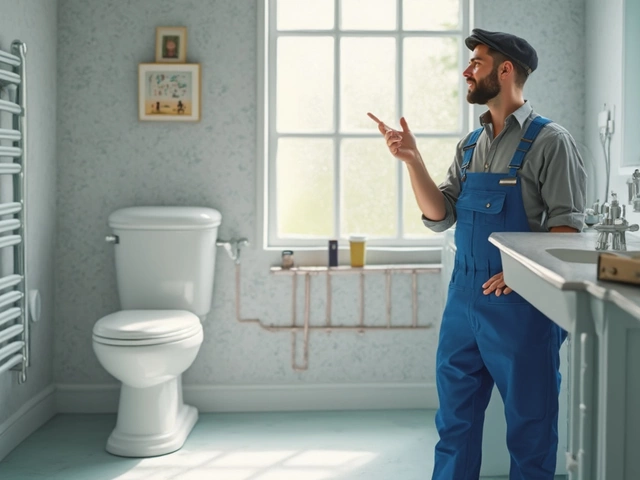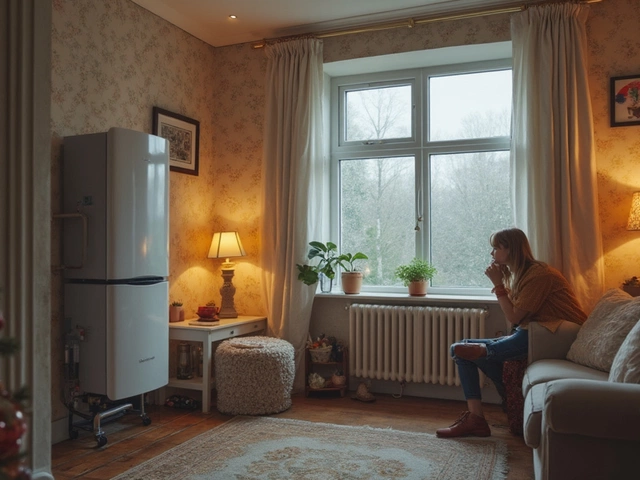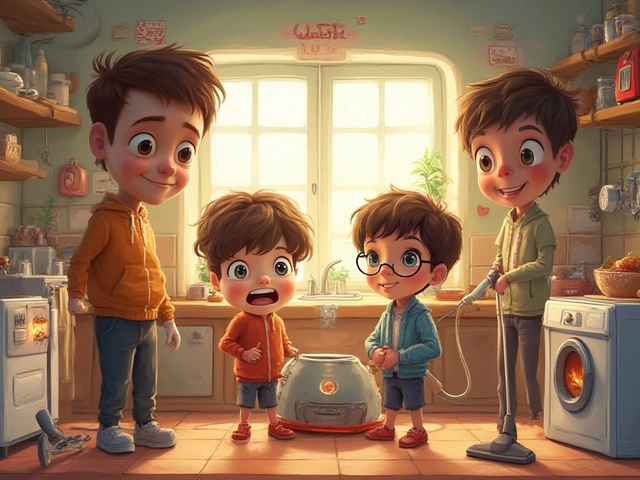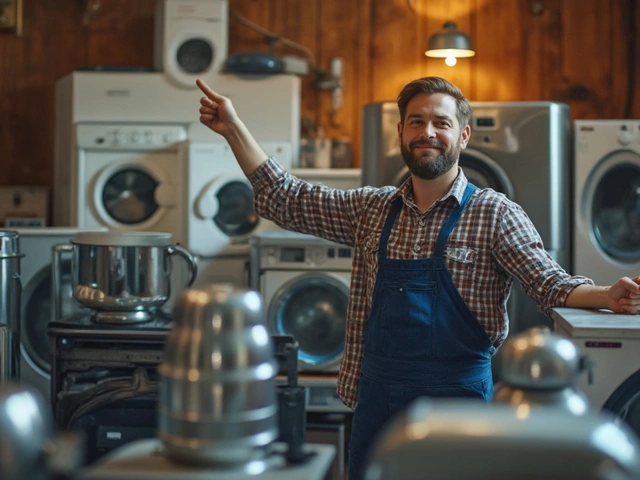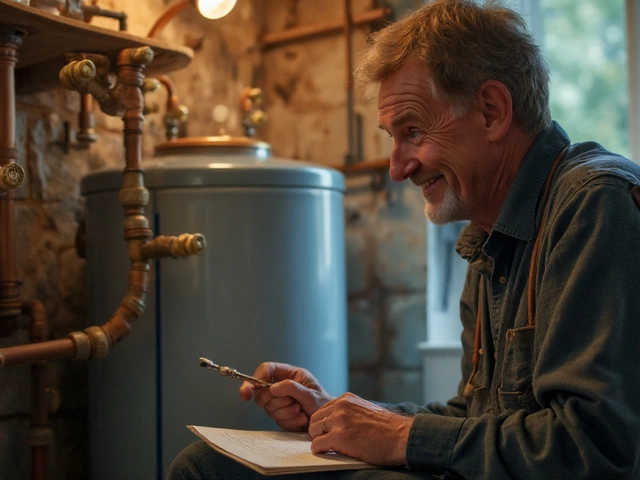Your comfort shouldn’t feel like a coin toss. If the heat pump runs nonstop, the bills soar, and your rooms still play hot-and-cold, you’re already asking the right question. You want a clear, no-nonsense way to know if it’s time to replace the system or squeeze more life out of it. You’ll get that here: quick rules, simple tests, real costs, and a decision path that won’t require a toolbox. I’m a dad who’s been through the winter panic-Finn’s bedtime can’t turn into a tundra-so this is written for real life, not a lab.
TL;DR: quick answer, jobs to be done, and rules you can trust
Key takeaways
- If the unit is 12-15+ years old, needs a major repair (compressor, coil, control board), and your energy bills have spiked 15-30% with no change in habits, a heat pump replacement is usually the smart move.
- Use the 50% Rule: if a repair costs over 50% of the price of a new system, replace.
- Use the $5,000 Rule: age of the unit (years) + repair cost (in $) > 5,000 → lean replace.
- Frequent breakdowns, weak heating below freezing, short cycling, or loud new noises are strong end-of-life clues.
- As of 2025, many rebates and a 30% federal tax credit (Energy Efficient Home Improvement Credit, Section 25C, capped at $2,000 for eligible heat pumps) can shrink replacement cost a lot.
What you came to do
- Spot real signs a heat pump is dying vs fixable quirks.
- Run a simple at-home check so you don’t guess.
- Compare repair vs replace with clear money and comfort math.
- Know 2025 realities: refrigerants, efficiency ratings (SEER2/HSPF2), and rebates.
- Walk away with a step-by-step plan and a checklist to talk to a pro without getting upsold.
Fast context, from sources that matter: The U.S. Department of Energy pegs typical heat pump life at roughly 10-15 years (climate and maintenance swing it). ENERGY STAR notes newer variable-speed systems often deliver better comfort and lower bills, especially in cold climates. ACCA’s Manual J/S/D are the industry standards for sizing and duct design, and AHRI lists matched equipment ratings you can trust. You don’t need to memorize those, but we’ll use their principles to keep your decision grounded.
Step-by-step: how to decide repair vs replace without guessing
Follow this in order. You’ll narrow the problem quickly and avoid paying for parts you don’t need.
-
Check the basics (10 minutes, no tools).
- Thermostat: Set to heat/cool, not auto-off. Bump it 3°F past current temp and listen for the system to kick on.
- Filter: If you can’t see light through it, it’s choking airflow. Swap it. A dirty filter alone can cause short cycling, freezing coils, and high bills.
- Vents: Open and clear. Couch blocking a supply? That single mistake can make a room feel broken.
- Outdoor unit: Clear leaves within 2 feet. No tarps. If it’s a winter day, light frost is normal; a block of ice is not.
- Breaker: If it tripped, reset once. If it trips again, stop and call a pro.
-
Run two easy performance checks.
- Cooling (summer or a warm day test): Measure air temperature at a return grille and at the nearest supply register. A healthy system often shows a 14-20°F drop. If you see only 5-10°F, you’ve got a performance problem (dirty coil, low refrigerant, weak compressor, or duct issues).
- Heating (winter test): With outdoor temps near freezing, you typically want a 20-30°F rise between return and supply. If it’s barely warm or the system never meets setpoint, suspect capacity loss, refrigerant issues, or a failing compressor or reversing valve.
-
Listen and look for end-of-life signs.
- Loud new noises: grinding (bearings), metal-on-metal scraping (fan), or a rapid click on/off (short cycling).
- Short cycling: runs for 2-5 minutes, stops, repeats. Often bad capacitors, control issues, or overheating. Chronic short cycling kills compressors.
- Frequent breaker trips: that’s a red line-don’t keep resetting.
- Ice in mild weather: a light winter frost is fine; a solid ice slab or summer icing points to airflow or refrigerant problems.
- Musty smell: likely microbial growth on the coil or in the drain pan. Refrigerant itself is basically odorless; a burned smell suggests motor or wiring damage.
-
Pull the facts that decide the money.
- System age: Check the data plate on the outdoor unit. Most brands embed the manufacture date or a serial code you can look up.
- Repair history: More than two breakdowns in a year is the classic pre-replacement pattern.
- Bill trend: Compare same-month bills year-over-year (similar weather). If usage jumped 15-30% with no lifestyle change, efficiency is fading.
- Refrigerant: Units built in the R‑22 era (pre-2010 installs) should almost always be replaced if they leak or need major work. R‑410A units are still supported but refrigerant is getting pricier with the phasedown. New installs use A2L refrigerants (R‑454B/R‑32) in 2025.
-
Run the two rules:
- 50% Rule: If a repair quote is more than half the cost of a new, high-efficiency system, replace.
- $5,000 Rule: Age in years + repair cost (in dollars). If it’s over 5,000, replacement usually wins. Example: 12-year-old unit + $1,800 repair = 13,800 → replace.
-
Map comfort and climate.
- Cold climate (regularly 0-20°F): If your unit leans on backup heat a lot, a cold-climate variable-speed heat pump will cut bills and keep steadier temps.
- Hot humid climate: If the house feels clammy despite cooling, variable speed and better dehumidification can fix it and reduce mold risk.
-
Decide safely.
- Replace now if: the unit is 12-15+ years old, repair is major, bills are rising, or comfort is poor in peak weather.
- Repair now if: the system is under 10 years, problem is minor (capacitor, contactor, clogged drain), and performance tests pass after the fix.
- Get 2-3 quotes if: costs are close. Ask for an AHRI-matched system quote with SEER2 and HSPF2 ratings listed and a Manual J load calc.
Safety note: Turn off power at the disconnect before touching the outdoor unit. Don’t open panels unless you know what you’re doing.

Real-life examples, costs, and what’s normal in 2025
Numbers make this real. Here’s what homeowners actually face, with typical 2025 pricing ranges. These are ballparks-labor rates and access can swing your quote.
Common repairs and prices (2025):
- Run capacitor or contactor: $150-$400. Often a good repair on younger systems.
- Blower motor (ECM): $600-$1,200. If the system is older than 12 years, weigh replacement.
- Defrost board or control board: $400-$1,000. Replacement makes more sense if your unit is near end of life or has multiple issues.
- Refrigerant leak find + fix + recharge (R‑410A): $800-$2,000+. If it leaks again, don’t chase-it’s a money pit.
- Indoor or outdoor coil: $1,500-$3,500. On older units, that’s typically a replace call.
- Compressor: $2,000-$4,500. If out of warranty on a 10+ year system, replacement wins most of the time.
Replacement costs (installed, 2025):
- Standard 2-3 ton split heat pump (good efficiency): $8,000-$13,000.
- High-efficiency variable-speed (SEER2 17-20, HSPF2 8.5-10): $12,000-$18,000.
- Cold-climate variable-speed (steady heat at 0°F): $14,000-$25,000.
- Single-zone ductless mini-split: $3,500-$7,000.
- Whole-home multi-zone ductless: $10,000-$20,000+ depending on zones and lineset work.
Rebates and credits (2025 snapshot):
- Federal 25C tax credit: 30% up to $2,000 for qualifying heat pumps. Keep invoices and product certificates.
- Utility/state rebates: $300-$3,000+ in many areas, often higher for cold-climate models. Check your utility and state energy office pages.
- Low-income electrification rebates (state-administered): availability varies by state rollout.
Efficiency ratings you’ll see on quotes:
- SEER2: cooling efficiency. Higher saves more in hot climates.
- HSPF2: heating efficiency. Higher matters in colder climates.
- Variable speed (inverter): better comfort, humidity control, and lower noise than single-stage.
Three scenarios to mirror yours:
-
12-year-old R‑410A, two repairs last year, bills up 22%, lukewarm air below 25°F. You get a $2,200 compressor quote. New high-efficiency variable-speed quote: $14,500 before $2,000 tax credit and $1,200 utility rebate → $11,300 net. 50% Rule says replace (the repair is ~15% of new, but age + performance issues + trend matter). You also gain comfort at freezing temps. I’d replace.
-
6-year-old unit, won’t start, tech finds a bad capacitor ($250) and a clogged condensate drain ($150). After the fix, your cooling temperature drop is 17°F. Bills steady. This is a repair, not a replace.
-
18-year-old R‑22-era system, coils corroded, leaks every summer, and it ices up. Any repair is throwing cash at a dead end. Replace with a matched system. You’ll also stop overpaying every month.
What’s normal vs not
- Normal: winter defrost cycles every 30-90 minutes in icy weather; soft whoosh sound while it defrosts.
- Not normal: defrost running every few minutes, a solid ice block on the outdoor unit, or steam that lasts more than a minute or two.
- Normal: a steady hum from the outdoor unit.
- Not normal: grinding, screeching, or rapid clicking.
- Normal: seasonal bill bumps during heat waves or cold snaps.
- Not normal: 20%+ bill spikes with similar weather and no thermostat changes.
Comfort tells you a lot: If one or two rooms are always out of whack, you may have a duct or balancing issue-not a dead heat pump. But if the whole home struggles in peak weather, capacity is likely fading or mis-sized from day one. ACCA Manual J sizing and Manual D duct design fix those issues during replacement.
Checklists, cheat sheets, and a simple decision path
Use these to lock in your call and to talk to a contractor like you’ve done this before.
End-of-life symptom checklist
- Age 12-15+ years (or earlier in harsh coastal/salty air zones)
- Major repair needed (compressor, coil, reversing valve, control board)
- Short cycling or frequent breaker trips
- Can’t hold setpoint in hot or freezing weather
- Energy bills up 15-30% year-over-year with similar weather
- Multiple refrigerant leaks or repeated recharges
- New, loud mechanical noises; vibration you feel in the walls
Quick DIY performance check
- Replace filter and clear vents.
- Measure return vs supply temps (cooling drop 14-20°F, heating rise 20-30°F).
- Check outdoor coil: clean fins, no thick ice. Clear 2 feet around it.
- Confirm thermostat mode, fan setting (auto, not on), and schedule.
- If breakers trip again after one reset-stop and call.
Repair vs replace-one-page decision guide
- If age ≤ 10 years and repair < 30% of replacement cost → repair.
- If age 10-12 years and repair 30-50% → compare energy savings + rebates; consider comfort goals.
- If age ≥ 12-15 years or repair > 50% → replace.
- Use $5,000 Rule as a tiebreaker: age (yrs) + repair cost ($) > 5,000 → replace.
Money math that actually helps
- Expected monthly savings: Upgrading from a tired single-stage to a variable-speed system can cut heating/cooling costs 15-30% depending on climate and ducts. If your annual HVAC spend is $1,800, a 20% cut is $360/year.
- Payback feel: If replacement nets $360/year and your net cost after credits/rebates is $10,000, that’s a simple payback of ~28 years on energy alone. But add comfort, fewer repairs, better dehumidification, and the math often still works, especially in cold climates where savings are larger.
- Hidden costs of delaying: repeated service calls, missed work time, emergency rates, and winter risk. I’ve paid the emergency premium once-never again.
What to ask every contractor (copy/paste)
- Will you run a Manual J load calculation and provide it?
- Is the quoted indoor/outdoor pair AHRI-matched? Share the AHRI reference number.
- What are the SEER2 and HSPF2 ratings of this match?
- Is this system variable-speed (inverter) or single/two-stage? Why that choice for my home?
- What ductwork changes are needed (Manual D) to hit design airflow?
- What’s the total price, including electrical, permits, and disposal-no surprises?
- What’s the parts and labor warranty length? Who handles registration?
- Which rebates and the federal 25C credit apply? Will you provide model certificates?
Avoid these pitfalls
- Replacing only the outdoor unit on an old indoor coil: mismatched systems underperform and can void warranties.
- Oversizing “just to be safe”: bigger cycles short, feels clammy, and wastes energy.
- Skipping duct fixes: a new system on bad ducts is like new tires on a bent rim.
- Chasing refrigerant leaks every season: fix the coil or replace the system.
- Assuming all quotes are equal: brand matters less than correct design, install, and commissioning.
Cold-climate note for 2025: If you regularly see single digits, ask for a cold-climate rated model with a published capacity table showing output at 5°F and 0°F. Look for stated performance at those temps, not just a lab rating. ENERGY STAR cold climate labels help, but capacity tables are the truth.
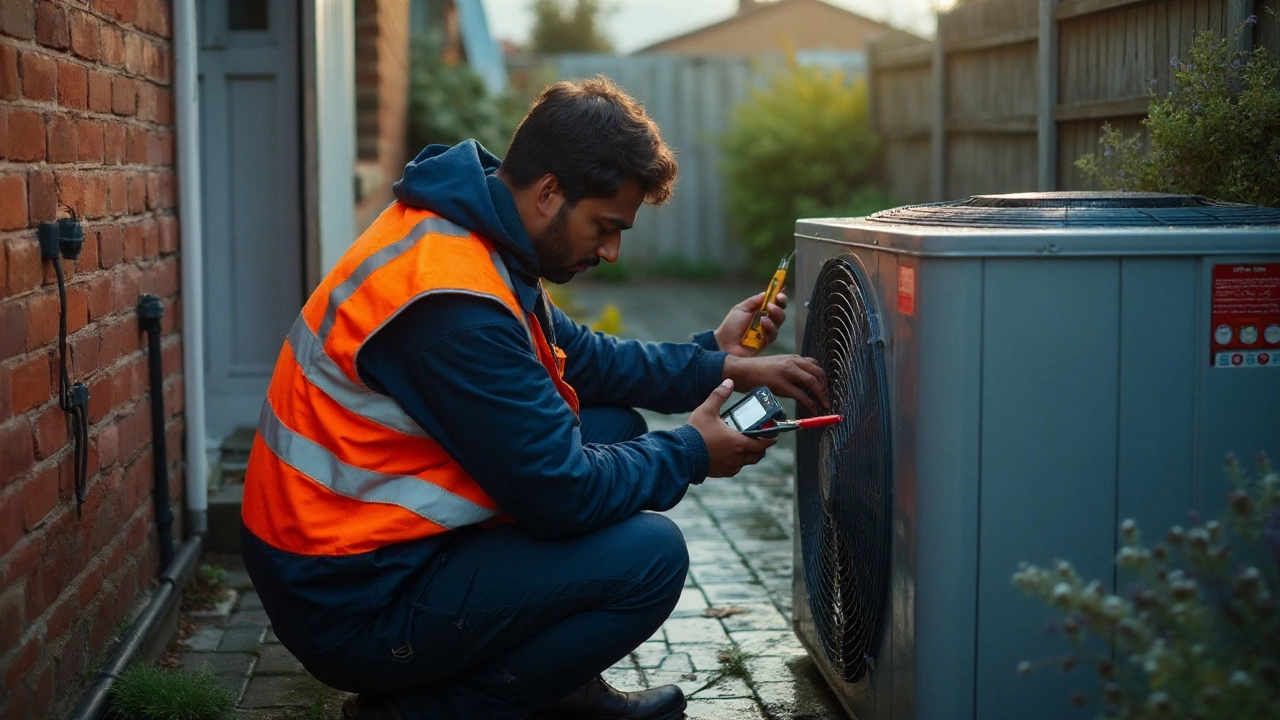
Mini‑FAQ, next steps, and troubleshooting paths
FAQ
- How long does a heat pump last? Often 10-15 years. Coastal, salty, or extreme climates shorten life. Great maintenance stretches it.
- Is it normal for my heat pump to run a lot? In extreme heat or cold, yes. Nonstop running with poor comfort is a red flag.
- Why does it blow cool air in winter sometimes? During defrost, the outdoor unit warms itself and you may feel cooler air briefly. It should switch back fast.
- Can I replace just the outdoor unit? You can, but don’t. AHRI-matched pairs are how you get rated efficiency and reliability.
- What about refrigerants in 2025? Many new units use A2L refrigerants (R‑454B or R‑32). They’re efficient and require trained installers. Old R‑22 is obsolete; R‑410A is phasing down but supported.
- Should I wait for better rebates? If your system is failing, don’t. Federal 25C is active now, and utility rebates come and go. Waiting can cost more in emergency calls and high bills.
- Is variable speed worth it? Usually yes for comfort, noise, and humidity control. The energy savings vary by climate and duct system quality.
Next steps by situation
- Younger system (≤ 10 years), poor performance after a filter change: Schedule a service visit for cleaning coils, checking refrigerant charge, and confirming airflow. Ask for static pressure readings and a simple report.
- Older system (12-15+ years), big repair looming: Get two replacement quotes with Manual J, AHRI match, and SEER2/HSPF2 listed. Ask both to include a duct eval. Compare net prices after rebates/credits.
- Cold climate, struggles below 25°F: Shortlist cold-climate variable-speed models with capacity tables at 5°F or 0°F. Consider adding a small ductless head for the coldest rooms instead of oversizing the main unit.
- High humidity in summer: Ask about variable-speed + proper latent capacity and lower continuous fan settings. Make sure the thermostat supports dehumidification control.
- Rental property owner: Favor reliability, warranty, and contractor speed. A slightly lower SEER2 with bulletproof install often beats a fragile high-spec unit.
Troubleshooting snippets
- Breaker keeps tripping: Stop resetting. Call a pro. That’s often compressor or wiring trouble.
- Ice on the outdoor unit (not winter): Shut it off. Replace filter. Switch fan to "On" to thaw the indoor coil, then call. Likely airflow or refrigerant issue.
- Water near indoor air handler: Clear condensate line with a wet/dry vac at the outside drain. If the safety switch trips again, schedule service.
- Uneven rooms: Check for closed dampers or crushed flex duct. Open interior doors. Ask for a duct balance during the next visit.
How I’d decide in your shoes: If my unit is 13 years old, needs a $1,900 repair, and we’ve had two breakdowns this year, I’m replacing-especially if Finn’s room never hits setpoint on cold nights. I’ll spec a variable-speed model, get a Manual J, and make sure the ducts aren’t the bottleneck. I’ll claim the 25C credit, snag any utility rebate, and keep the old emergency fund for something more fun than compressor failures.
One last practical tip: Before any replacement, take photos of your filter size, breaker rating, line set path, and outdoor clearances. Share them when you request quotes. Contractors give sharper numbers when they see the real-world constraints.
Your call should feel boringly confident: if the rules point to repair, fix it and move on. If they point to replacement, invest once, do it right, and let your home feel like it’s on cruise control.
